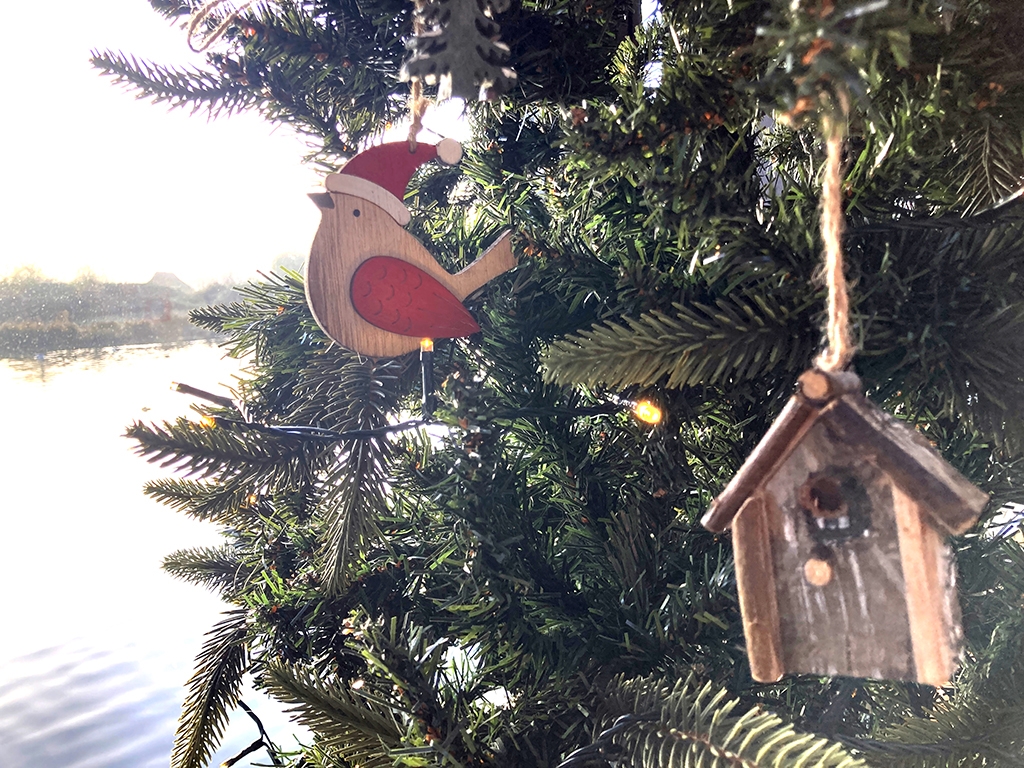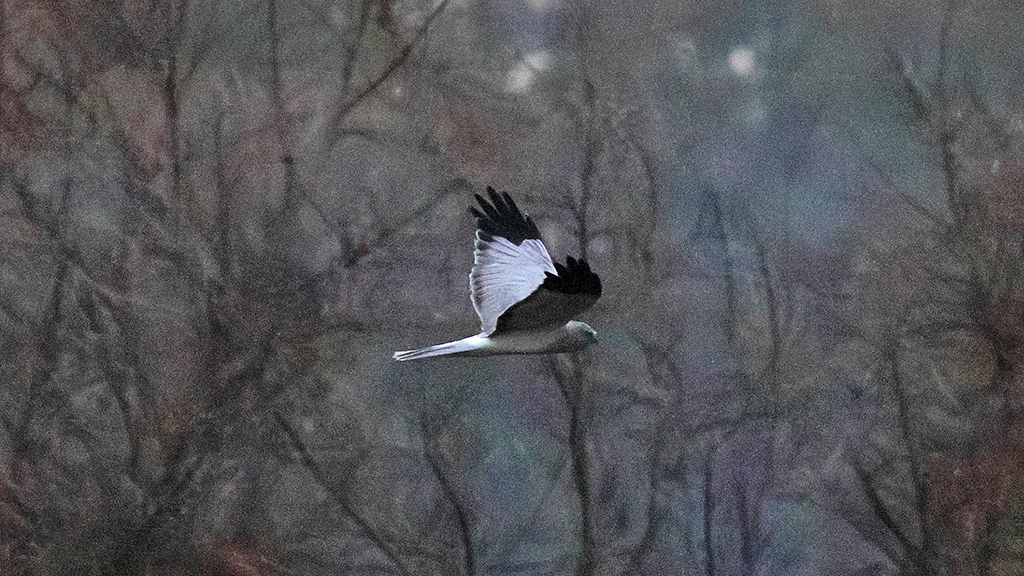What's Wild this Spring?

Despite cool weather continuing into April there has been enough sun and warm temperatures to launch new life on across the wetlands.
Spring is definitely underway! Treat your senses to wildflowers blooming, insects buzzing and birdsong in the air as wildlife awakens throughout the wetlands. Bring your binoculars and a camera to capture new families of wild birds from afar and remember to look at the little things like insects and flowers that are close to you to really connect with nature this season. The lovely greylag goose and gosling photo above is by Carpenter Creative and Photography.
Kingfishers and Sand martins
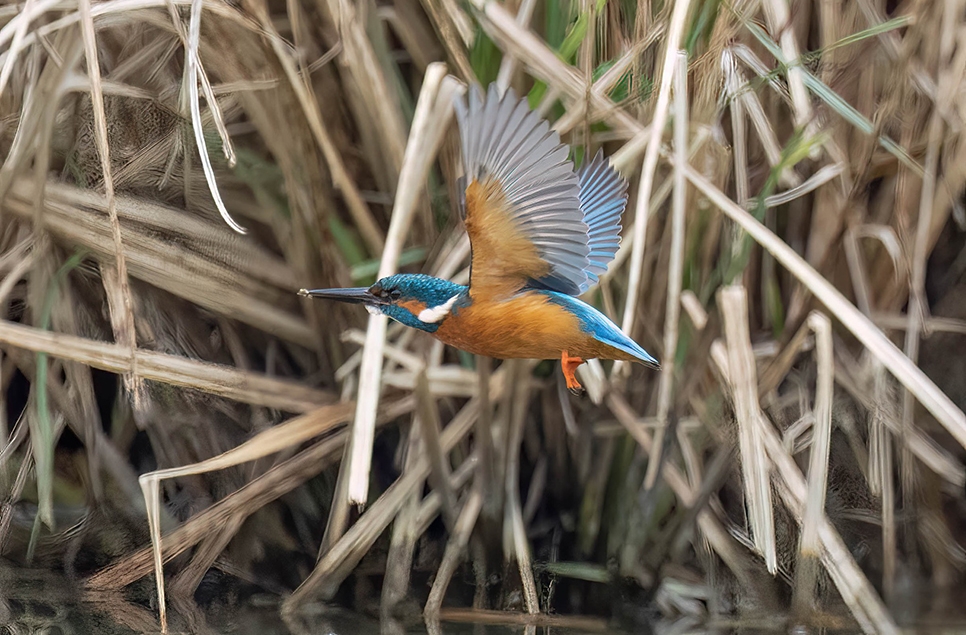
Visitor Alec Pelling captured this kingfisher in flight near the nesting bank on the Arun Riverlife lagoon in April Photos: Alec Pelling
A kingfisher pair are back on the Arun Riverlife lagoon this spring. The pair appear to be usig in hole #5 again in the nesting bank across from the Discovery hide. We expect they may be on eggs now with a first brood hatching in May. Look for a flash of blue across the water and they often sit and fish from the perches around the bank.
We are not sure about the pair of kingfishers who nested in one of the holes in the Sand Martin Hide last year – its one to watch.
Sand martins are back in abundance and can be seen hawking over the water, before popping in and out of the nest chambers of the nesting banks on the "arms" of the Sand martin hide. The windows of this hide are now locked for the breeding season to minimise disturbance to the nesting birds. Thirteen pairs of sand martins nested in the bank last spring-summer, hopefully the colony will have grown again this year.
Look out for lapwing chicks
Lapwings have paired up and are nesting on the wet grassland. A pair has been nest scraping at the Lapwing hide and across from the Ramsar hide two pairs of lapwing have been on nests. On April 24 two chicks were spotted here in the morning by the wardens! The work really starts now for the doting lapwing parents to protect their chick from crows, herons and herring gull predators. The adults give a warning call when danger is spotted and the chicks crouch and freeze, blending into the grass and dirt. The parents fly at any attackers, mobbing them until the threat flies away.
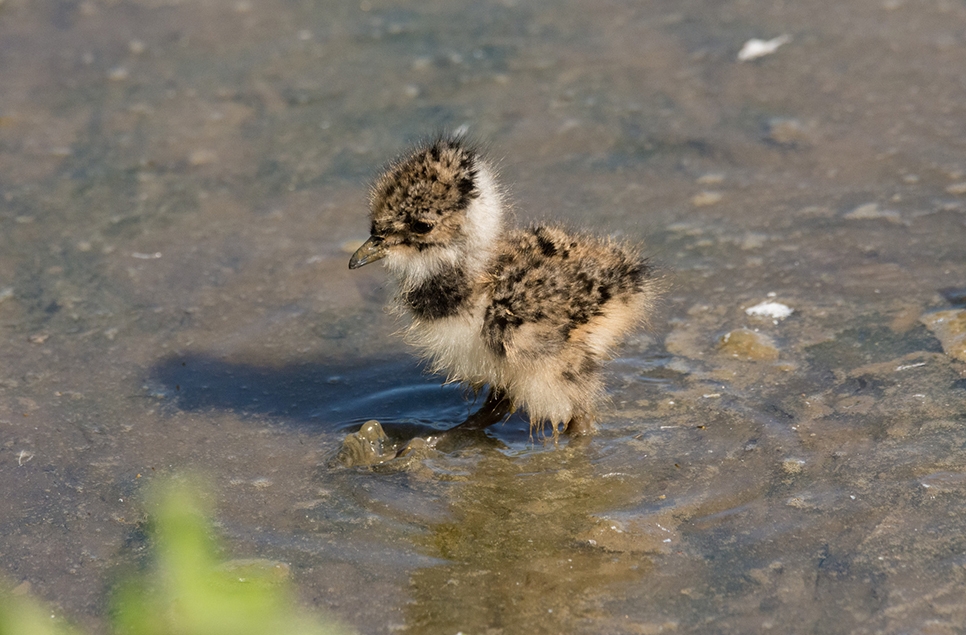
The mottled markings on the tiny lapwing chick help it to camouflage in the dirt and grass when the parents give a warning cry
Goslings a-plenty
Greylag and Canada geese are now marching troops off goslings, forever eating as they go. It is easy to spot these families from the pathways and children love to watch them. The adult geese will hiss at people but give them plenty of space and walk slowly. Mallard families tend to favour the waterways so look in the ditches and under the trees in the Wood Loop.
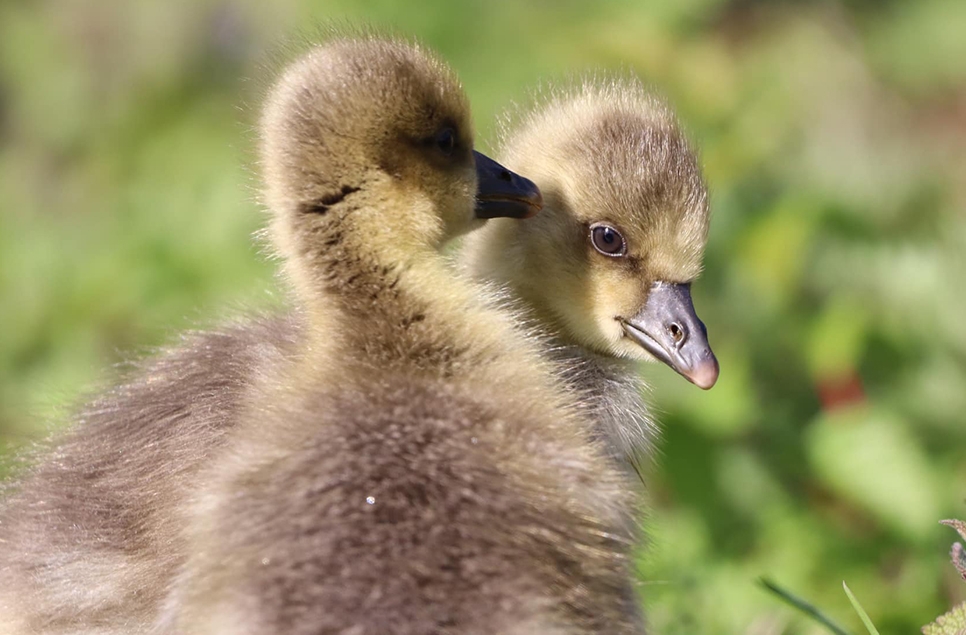
Whispering gosling secrets Photo: James King, WWT Media Volunteer
Warblings of bird song
Warblers have returned to Arundel Wetland Centre in force. Cetti’s, reed and sedge warbler, chiffchaff and blackcap are all singing loudly. Cetti's warblers are the loudest by far! Lots of blue and great tits around and fearless robins. The Learning team tells me they were showing visiting children an alderfly emerging from its casing after crawling out of the water getting ready to take flight when a robin flew down to the tray and snatched the insect up for lunch!
We put out two common tern decoys on an island in the large lagoon between the Ramsar and Sand martin hides, hoping to attract common terns back to the site. The herring gulls seem to have taken umbrage with the presence of “Ike and Tina” tern decoy and kept plucking them from the island and depositing them along the water’s edges! Following various reports of “dead” birds floating from our visitors, it was decided that perhaps the decoys should not be used this year!
Some black-headed gulls are nesting on the islands of the large lagoon between Ramsar and Sand martin hides. We are seeing about 60 gulls in the mornings and this builds during the day with common gulls and Mediterranean gulls mixed in with the black-headed gulls. Equal numbers of the larger herring gulls are onsite as well.
Where are the oystercatchers nesting?
In past year the two pair of oystercatchers that visit our site would be on scrapped nest sitting on eggs by now. Both pair do seem to be back onsite but they haven't settled in to any nesting psots yet - as far as we are able to see. A pair are hangng around the sand martin hde - in past they have nested on the roof and on an island.
The second pair is hanging about the gravel island on Arun Riverlife and Pelican Cove but have not nested. Their previous nesting spot in the area around Coastal Creek is more active with a new pathway and has more vegatation than in past year so they may be looking for a new spot.
A pair of oystercatchers hanging around Pelican Cove.
Wildlife Surveys
We began survey for wildlife again in April. Our first reptile survey on April 11th found two adult grass snakes, one juvenile grass snake and a rather chunky female slow worm, under the refugia (metal roofing sheets) dotted around the site. Our first bat survey on April 15th showed all three species of pipistrelle species (soprano, common and Nathusius’), together with noctule bats, Daubenton’s bat and serotine bats recorded on our detectors. Our April 4 Butterfly survey recorded brimstone, orange-tips, holly-blue, peacock and speckled wood butterflies.
Wetland carpet of wildflowers
A sea of yellow marsh marigolds are now in flower across the natural water treatment pond between Pelican Cove and Coastal Creek aviary. Staff and volunteers have planted the marigolds and other wetlands species over the past three years since the aviary was built to act as natural filtration to help clean the water.
Primrose have now been joined by the extra colour of white
and red dead nettle, purple bugles of ground ivy, cowslip, coltsfoot, lungwort, forget-me-not,
violets, lady’s smock and snake’s head fritillary. Invertebrate life such as
orange-tip, peacock and brimstone butterflies, bee-flies, white-tailed,
buff-tailed, red-tailed and early bumblebees and red mason bees can be seen on
sunnier days.
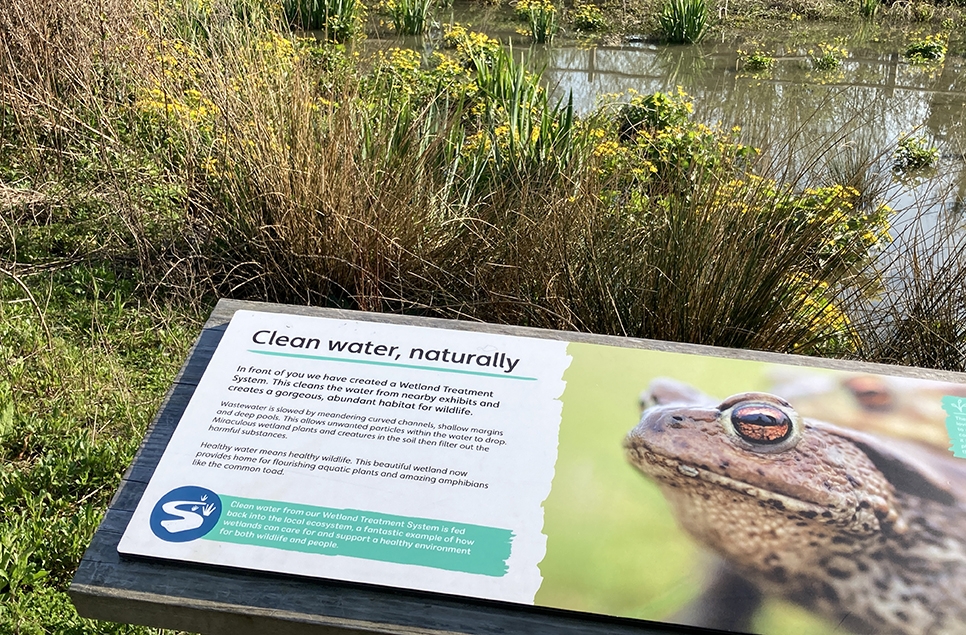
Marsh marigolds flowering across the natural water treatment pond between Pelican Cove and Coastal Creek aviary
Ready to Visit?
If you've been inspired to discover wetland wildlife at WWT Arundel this spring, find out more and plan your visit online.
Plan your visit
